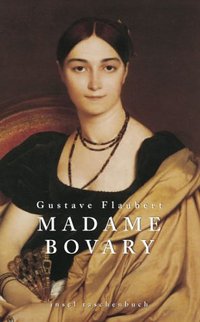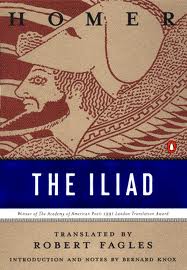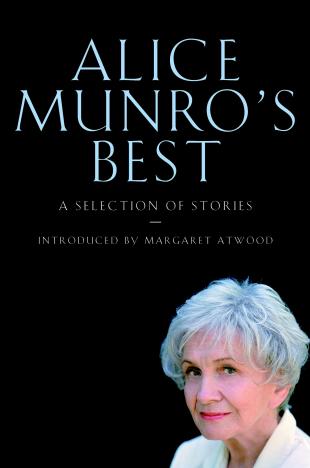Author Photo And Bio
 1. Madame Bovary by Gustave Flaubert (1857). Of the many nineteenth-century novels about adulteresses, only Madame Bovary features a heroine frankly detested by her author. Flaubert battled for five years to complete his meticulous portrait of extramarital romance in the French provinces, and he complained endlessly in letters about his love-starved main character — so inferior, he felt, to himself. In the end, however, he came to peace with her, famously saying, “Madame Bovary: c’est moi.” A model of gorgeous style and perfect characterization, the novel is a testament to how yearning for a higher life both elevates and destroys us.
1. Madame Bovary by Gustave Flaubert (1857). Of the many nineteenth-century novels about adulteresses, only Madame Bovary features a heroine frankly detested by her author. Flaubert battled for five years to complete his meticulous portrait of extramarital romance in the French provinces, and he complained endlessly in letters about his love-starved main character — so inferior, he felt, to himself. In the end, however, he came to peace with her, famously saying, “Madame Bovary: c’est moi.” A model of gorgeous style and perfect characterization, the novel is a testament to how yearning for a higher life both elevates and destroys us.
 2. Dubliners by James Joyce (1916). Although many of these largely autobiographical stories evoke themes of death, illness, and stasis, nearly all offer their characters redemption —or at least momentary self-knowledge —through what Joyce called “epiphanies,” in which defeat or disappointment is transformed by a sudden, usually life-altering flash of awareness. The collection’s emotional centerpiece is its concluding tale, “The Dead,” which moves from a New Year’s Eve party where guests muse about issues of the day —the Catholic church, Irish nationalism, Freddie Malins’s worrying drunkenness —to a man’s discovery of his wife weeping over a boy who died for love of her. A profound portrait of identity and loneliness, it is Joyce’s most compassionate work.
2. Dubliners by James Joyce (1916). Although many of these largely autobiographical stories evoke themes of death, illness, and stasis, nearly all offer their characters redemption —or at least momentary self-knowledge —through what Joyce called “epiphanies,” in which defeat or disappointment is transformed by a sudden, usually life-altering flash of awareness. The collection’s emotional centerpiece is its concluding tale, “The Dead,” which moves from a New Year’s Eve party where guests muse about issues of the day —the Catholic church, Irish nationalism, Freddie Malins’s worrying drunkenness —to a man’s discovery of his wife weeping over a boy who died for love of her. A profound portrait of identity and loneliness, it is Joyce’s most compassionate work.
 3. The Iliad by Homer (ninth century b.c.e.?). The glory and horror of war pulse through this epic poem about the thousand ships launched in battle after the Trojan prince Paris abducts the beautiful Helen from her husband Menelaus, the King of Sparta. Through exquisite language Homer tells of capricious Greek gods and goddesses, fealty and honor between friends, and the terror of war. While crafting mythical tales, he creates an array of legendary heroes, especially Achilles, whose pride is as vulnerable as his heel.
3. The Iliad by Homer (ninth century b.c.e.?). The glory and horror of war pulse through this epic poem about the thousand ships launched in battle after the Trojan prince Paris abducts the beautiful Helen from her husband Menelaus, the King of Sparta. Through exquisite language Homer tells of capricious Greek gods and goddesses, fealty and honor between friends, and the terror of war. While crafting mythical tales, he creates an array of legendary heroes, especially Achilles, whose pride is as vulnerable as his heel.
 4. The Decameron by Giovanni Boccaccio (1351–53). The Big Chill meets the Black Death when a group of seven women and three men leave Florence to escape the plague of 1348. To entertain themselves, they tell stories according to topics selected by that day’s appointed “king” or “queen.” Like the plague, the hundred tales, mostly of love and deceit, leave no strata of society unscathed, and many of them are delightfully bawdy and irreverent. Have you heard the one about the monk who seduced a woman by claiming to be the angel Gabriel?
4. The Decameron by Giovanni Boccaccio (1351–53). The Big Chill meets the Black Death when a group of seven women and three men leave Florence to escape the plague of 1348. To entertain themselves, they tell stories according to topics selected by that day’s appointed “king” or “queen.” Like the plague, the hundred tales, mostly of love and deceit, leave no strata of society unscathed, and many of them are delightfully bawdy and irreverent. Have you heard the one about the monk who seduced a woman by claiming to be the angel Gabriel?
5. Troilus and Criseyde by Geoffrey Chaucer (1381). The first great love story in English, this epic poem tells the story of what befell two lovers, Criseyde and Troilus, during the Trojan war. Criseyde is a stunner: “So aungellyk was hir natyf beautee / That lyk a thing immortal semed she.” Troilus is a Trojan prince. Alas, Criseyde can’t dally in Troy —she is forced to leave to go to the Greeks, for whom her father, a soothsayer, is working. Her pledge of eternal fidelity to Troilus is broken when she is seduced by the Greek warrior Diomedes. Is she a tramp or a victim of circumstances? Chaucer overturns the tiresome clichés of medieval misogyny in his humanistic treatment of this story.
 6. Romeo and Juliet by William Shakespeare (1595). The story of star-crossed Veronese lovers, this early romantic tragedy painfully depicts the fatal course of young lovers ruined by circumstances beyond their control, belonging as they do to two families who hate each other for long forgotten reasons. The intense violence at the heart of the play is matched only by the intense passion of Romeo and Juliet, who pay the ultimate price for the brief, intense, and pure love they shared.
6. Romeo and Juliet by William Shakespeare (1595). The story of star-crossed Veronese lovers, this early romantic tragedy painfully depicts the fatal course of young lovers ruined by circumstances beyond their control, belonging as they do to two families who hate each other for long forgotten reasons. The intense violence at the heart of the play is matched only by the intense passion of Romeo and Juliet, who pay the ultimate price for the brief, intense, and pure love they shared.
 7. Jane Eyre by Charlotte Brontë (1847). Like Wuthering Heights, this is a romance set in the isolated moors of rural England the Brontës called home. Its title character is an exceptionally independent orphan who becomes governess to the children of an appealing but troubled character, Mr. Rochester. As their love develops, the author introduces a host of memorable characters and a shattering secret before sending Jane on yet another arduous journey.
7. Jane Eyre by Charlotte Brontë (1847). Like Wuthering Heights, this is a romance set in the isolated moors of rural England the Brontës called home. Its title character is an exceptionally independent orphan who becomes governess to the children of an appealing but troubled character, Mr. Rochester. As their love develops, the author introduces a host of memorable characters and a shattering secret before sending Jane on yet another arduous journey.
8. Washington Square by Henry James (1880). James deeply admired Balzac. Here he pays homage to the Frenchman by recasting the novel Eugénie Grandet. The setting now is New York but the dynamic is the same: despite her father’s best, often cruel, efforts, an unexceptional, though wealthy young woman falls in love with a dashing fortune hunter. James leaves the reader to wonder which man hurt her worse: the father who told the truth or the lover who deceived her?
 9. Middlemarch by George Eliot (1871–72). Dorothea Brooke is a pretty young idealist whose desire to improve the world leads her to marry the crusty pedant Casaubon. This mistake takes her down a circuitous and painful path in search of happiness. The novel, which explores society’s brakes on women and deteriorating rural life, is as much a chronicle of the English town of Middlemarch as it is the portrait of a lady. Eliot excels at parsing moments of moral crisis so that we feel a character’s anguish and resolve. Her intelligent sympathy for even the most unlikable people redirects our own moral compass toward charity rather than enmity.
9. Middlemarch by George Eliot (1871–72). Dorothea Brooke is a pretty young idealist whose desire to improve the world leads her to marry the crusty pedant Casaubon. This mistake takes her down a circuitous and painful path in search of happiness. The novel, which explores society’s brakes on women and deteriorating rural life, is as much a chronicle of the English town of Middlemarch as it is the portrait of a lady. Eliot excels at parsing moments of moral crisis so that we feel a character’s anguish and resolve. Her intelligent sympathy for even the most unlikable people redirects our own moral compass toward charity rather than enmity.
 10. Stories of Alice Munro (1931– ). A master of the small epiphany, the moment of clarity, Alice Munro writes of men and women who struggle to reconcile the lives they have made with their sometimes confused longings. Largely set in urban and rural Canada, Munro’s stories feature characters whose inner lives gradually peel away to reveal themselves in all their richness and complexity. Munro’s plots do not forge ahead in a linear fashion, but loop and meander and take their time getting where they need to go, slowly revealing their characters and revealing what lies behind the choices they have made.
10. Stories of Alice Munro (1931– ). A master of the small epiphany, the moment of clarity, Alice Munro writes of men and women who struggle to reconcile the lives they have made with their sometimes confused longings. Largely set in urban and rural Canada, Munro’s stories feature characters whose inner lives gradually peel away to reveal themselves in all their richness and complexity. Munro’s plots do not forge ahead in a linear fashion, but loop and meander and take their time getting where they need to go, slowly revealing their characters and revealing what lies behind the choices they have made.